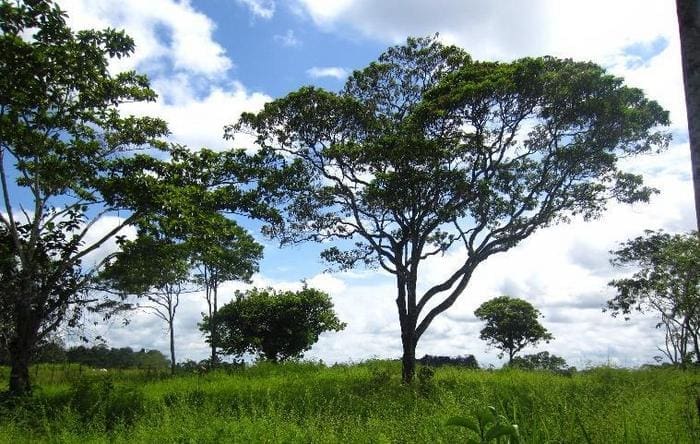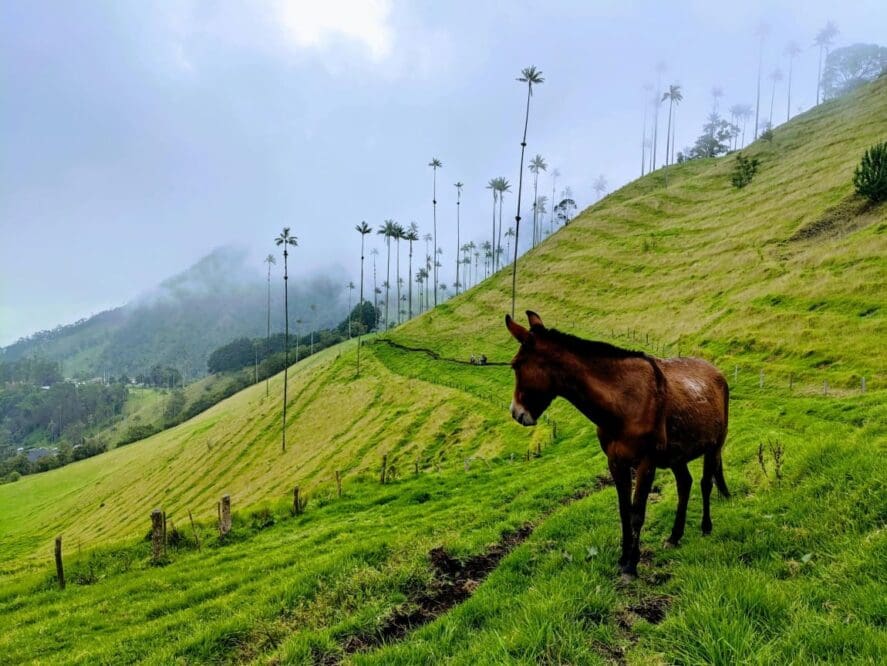By The Alliance of Bioversity International and the International Center for Tropical Agriculture
When trees and livestock compete for land, the trees usually lose. It doesn’t have to be this way. But centrally designed plans to implement tree-livestock coexistence in deforested areas don’t always work on faraway farmland.
The ineffectiveness can be due to trying to accomplish too much too quickly. Transforming hundreds of thousands of hectares of treeless or degraded pastures into sustainable landscapes for livestock, nature and people should be a gradual, low-disruption process. And it should start with the people already quietly transforming small pieces of land – and those who want to.
In the southern Colombian department of Caquetá, which is recovering from decades of armed conflict and is now beset by reckless deforestation and the destructive forces of climate change, the people leading the change tend to be women, new research shows.

When women are in charge of the land (and only 15% of them were in the study), they are more likely than men to have silvopastoral livestock systems, where cattle meander through trees and eat plants grown on the landscape. Whether they manage the land or not, women are more willing to integrate nature into livestock farming.
“We found that women are more motivated to conserve the environment,” said Augusto Castro, a researcher at the Alliance of Bioversity International and CIAT and the lead of the study published Scientific Reports. “Additionally, they have a higher propensity to adopt silvopastoral systems.”
Researchers collected data collected on more than 2,800 paddocks, which are small parcels of farmland for raising livestock. Along with gender-differentiated data, they collected socioeconomic information from farmers that point to several paradigm-challenging ways to incentivize the adoption of silvopastoral systems in conflict-affected settings in Colombia.
“We’re still developing strategies to promote sustainable silvopastoral systems based on beliefs and not on facts,” Castro said. “We need to use data from systematic studies to scale up silvopastoral systems successfully.”
Know the landscape
The study was conducted under the Sustainable Productive Strategies Project, which is funded by Germany’s International Climate Initiative (IKI), and the CGIAR Initiative on Low-Emission Food Systems, which provides research for low-emissions development and to increase farmer resiliency to climate change.
Compared to degraded, mostly treeless pastures, silvopastoral farms are better for the environment: they reduce greenhouse gas emissions, store more carbon, diversify farm production, conserve biodiversity, and mitigate the negative impacts of weather extremes. They can also increase farm income.
While becoming globally more popular, silvopastoral uptake everywhere remains slow. Why?
In southern Colombia, one reason is a poor understanding of the incentives to adopt silvopastoral systems – and the integration of these incentives into policies and implementation. Another is economic: landscape transformation requires substantial investments of time and money before bottom lines start to improve. But access to finance is not necessarily the primary barrier to adoption: 56% of farmers surveyed have access to credit to invest in their farms.
“Just because you have the means to invest in silvopastoral systems doesn’t mean you will do it,” Castro said.
While women are more motivated than men to have trees on their farms for environmental reasons and to benefit future generations, it doesn’t mean that men do not want trees on their farms; they just have different motivations. The study showed that men place a greater value than women on on-farm trees for future construction projects.
Both men and women value trees to comply with conservation agreements, generate income, conserve water, and shade for people (but significantly less so for animals, suggesting that greater awareness of the benefits of escaping the heat for livestock health is needed).
More research is needed to understand gender preferences for silvopastoral systems, but co-author Mary Ngaiwi, an Alliance researcher, said women spend more time working the land and therefore know it better.
“Women may be more motivated to plant trees because they have a better understanding of the state of their plots and have more ideas on how to do things that improve farm output,” Ngaiwi said. “The activities are good for the environment but improving the environment may not be the top motivating factor.”
Additionally, women see up close one of the main benefits of silvopastoral systems: healthier livestock. “Since women are involved in milking and feeding, they can see these effects more quickly,” said Alexander Buritica, a co-author from the Alliance and Universidad de los Andes, a Colombian university.
Even though only 17% of paddocks in the study had basic levels of silvopastoral implementation (improved pastures and trees) and 7% had medium-to-high levels (pastures, trees, aqueducts for livestock and fodder banks), the benefits of silvopastoral implementation are becoming better known. Some 45% of farmers surveyed said they were aware of success stories related to silvopastoral farming in their municipalities.
“The growing awareness of the benefits of silvopastoral farming may help increase motivation to implement these systems,” said Marcela Quintero, a co-author and Associate General Director of the Alliance. “But the majority of farmers will need to hear silvopastoral success stories from other farmers. Communicating these stories – and building more of them – should be a priority for organizations promoting implementation.”
Implementation also requires a strong, long-term commitment to providing technical advice to people who want to improve their land. “Providing financial assistance only would not be enough,” Quintero said.
Smarter scales
The study’s focus on paddocks (as opposed to entire farms) obtained granular information on silvopastoral implementation and benefits. Many farms dedicate only a portion of their farm to silvopastoral activities and could be missed in broader studies that attempt to gauge adoption levels and related benefits.
The study suggests implementation organizations should focus on supporting silvopastoral systems at the paddock level and plan for scaling to one paddock at a time. The study also showed that benefits begin accruing even at basic levels, suggesting that metrics for successful adoption should focus on smaller scales.
“Silvopastoral systems are not black and white,” said Carolina González, a co-author from the Alliance. “At least three or four practices could be gradually integrated into a silvopastoral system. Our research model reflects this reality. And, during early stages of uptake, it’s probably better to invest in 10,000 basic adopters at the paddock level rather than 10 high-scale adopters at the entire farm level.”
More information: Castro-Nunez, A., Buritica, A., Holmann, F. et al. ‘Unlocking sustainable livestock production potential in the Colombian Amazon through paddock division and gender inclusivity’, Scientific Reports (14, 13644; 2024). DOI: 10.1038/s41598-024-63697-2. Featured image credit: Dominik Simecek | Pexels




